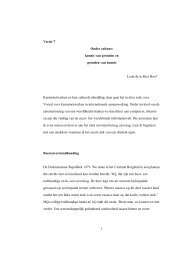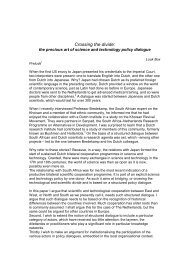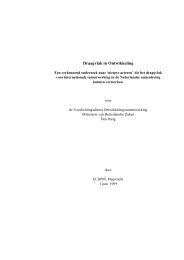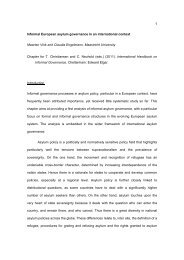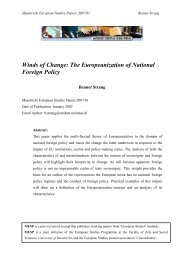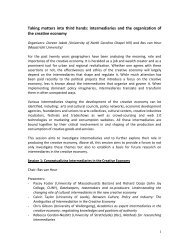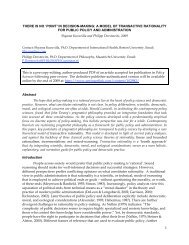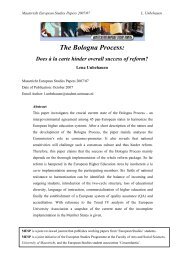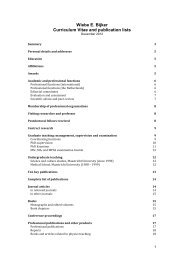the case of the synthetic dye industry, 1857–1914 - Maastricht ...
the case of the synthetic dye industry, 1857–1914 - Maastricht ...
the case of the synthetic dye industry, 1857–1914 - Maastricht ...
You also want an ePaper? Increase the reach of your titles
YUMPU automatically turns print PDFs into web optimized ePapers that Google loves.
190 J.P. Murmann and E. Homburg<br />
Fig. 4. Country shares <strong>of</strong> global firm population<br />
rising from 24 firms in 1877 to 43 firms in 1897. This pattern is very different<br />
from both France and Britain where such growth phases did not take place. A<br />
substantial decline in <strong>the</strong> number <strong>of</strong> firms occurred in Germany much later than<br />
in France. Between 1897 and 1907 <strong>the</strong>re was a consolidation in <strong>the</strong> German <strong>dye</strong><br />
<strong>industry</strong>, and participation fell to <strong>the</strong> 1870s level <strong>of</strong> about 25 firms.<br />
Small players: Switzerland and U.S.<br />
Whereas syn<strong>the</strong>tic <strong>dye</strong> production started in Switzerland at about <strong>the</strong> same time<br />
(1859) it did in Germany and France, <strong>the</strong> first producer in <strong>the</strong> U.S. appeared<br />
only in 1864. Just as Britain, Germany and France, Switzerland experienced a<br />
steep growth from 1858–1862 when <strong>the</strong> number <strong>of</strong> firms increased from 0 to 8.<br />
Parallel to <strong>the</strong> situation in France, a first decline set from 1862 to 1866 in which<br />
<strong>the</strong> number <strong>of</strong> firms fell from 8 to 4. Between 1867 and 1873 <strong>the</strong> number <strong>of</strong><br />
firms increased again from 4 to 7. This is different from France where <strong>the</strong> number<br />
<strong>of</strong> firms did not increase in <strong>the</strong> late 1860s and early 1870s, but was similar to<br />
<strong>the</strong> German pattern <strong>of</strong> growth in <strong>the</strong> number <strong>of</strong> firms. From 1871 until <strong>the</strong> First<br />
World War <strong>the</strong> number <strong>of</strong> firms was roughly <strong>the</strong> same in France and Switzerland,<br />
but <strong>the</strong>re was one important difference: on average <strong>the</strong> Swiss firms were larger<br />
than <strong>the</strong>ir French counterparts. With a 7% share in world <strong>dye</strong> production in<br />
1913, <strong>the</strong> Swiss <strong>dye</strong> <strong>industry</strong> had, to be sure, only one tenth <strong>of</strong> <strong>the</strong> size <strong>of</strong> <strong>the</strong>ir<br />
German counter parts, but it was larger than <strong>the</strong> <strong>dye</strong> <strong>industry</strong> <strong>of</strong> countries with<br />
a far greater population or textile <strong>industry</strong>, such as Great Britain (6.5% <strong>of</strong> world



